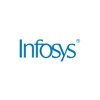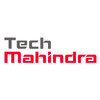
i
TCS
Filter interviews by
TCS Rpa User Interface Path Developer Interview Questions, Process, and Tips
TCS Rpa User Interface Path Developer Interview Experiences
2 interviews found
I appeared for an interview before Jun 2023.
(3 Questions)
- Q1. What about RE Framework
- Ans.
RE Framework is a template for building robust and scalable automation solutions in UiPath.
RE Framework stands for Robotic Enterprise Framework
It provides a structured way to build automation projects with error handling, logging, and reusability
It consists of several key components like Init, Process, End Process, and Exception Handling
It helps in managing transactional data and handling exceptions efficiently
- Q2. Are you worked in PDF Automation
- Ans.
Yes, I have experience in PDF automation using UiPath for extracting data and automating processes.
I have automated the extraction of data from PDF files using UiPath activities like Read PDF Text, Read PDF with OCR, etc.
I have automated the process of filling out forms in PDF files using UiPath activities like Type Into, Click, etc.
I have experience in handling password-protected PDF files and extracting data from the
- Q3. Do you know Mainframe automation
- Ans.
Yes, Mainframe automation involves automating tasks on mainframe systems using RPA tools like Uipath.
Mainframe automation involves automating tasks on mainframe systems using RPA tools like Uipath
It requires knowledge of mainframe systems and how to interact with them using RPA
Examples include automating data entry, file transfers, and report generation on mainframe systems
Skills evaluated in this interview
Interview Questionnaire
7 Questions
- Q1. 1. what are the difference between queue item and transaction item ?
- Ans.
Queue item is a container for data that needs to be processed, while transaction item is a unit of work that is processed by a robot.
Queue item is a data container that can hold any type of data, while transaction item is a specific type of data that represents a unit of work.
Queue item can be added to a queue by any process, while transaction item is typically added to a queue by a robot.
Queue item can be processed by...
- Q2. 2. what is RE Frame work explain in detail ?
- Ans.
RE Framework is a template for building scalable and robust RPA processes.
RE stands for Robotic Enterprise Framework
It is a template for building RPA processes in UiPath
It follows a modular approach with reusable components
It includes error handling, logging, and reporting functionalities
It supports both linear and state machine workflows
- Q3. 3. Explain in detail about exception handling ?
- Ans.
Exception handling is the process of handling errors and unexpected events that occur during the execution of a program.
Exceptions are handled using try-catch blocks.
The try block contains the code that may throw an exception.
The catch block catches the exception and handles it appropriately.
There are different types of exceptions such as system exceptions, application exceptions, and business exceptions.
Exception hand...
- Q4. 4. what is Asset and what are different data types available in orchestrator ?
- Ans.
Assets are key-value pairs used to store data securely in Orchestrator. Different data types include text, boolean, integer, credential, and secure string.
Assets are used to store sensitive data like passwords, API keys, etc.
Assets can be accessed by robots during runtime.
Different data types available in Orchestrator include text, boolean, integer, credential, and secure string.
Text assets store plain text values.
Bool...
- Q5. 5. what is dispatcher and performer ?
- Ans.
Dispatcher and performer are two components of UiPath Orchestrator used for managing and executing RPA processes.
Dispatcher is responsible for fetching data from external sources and sending it to the performer for processing.
Performer is responsible for executing the RPA process using the data received from the dispatcher.
Dispatcher and performer work together to automate end-to-end business processes.
Dispatcher can b...
- Q6. 6. How does object repository works ?
- Ans.
Object repository is a centralized location to store and manage objects used in automation.
Object repository helps in reducing redundancy and improving reusability of objects.
It allows easy maintenance and modification of objects.
Objects can be organized and categorized for easy access and management.
Object repository can be integrated with automation tools for seamless automation.
Examples of objects include buttons, t
- Q7. 7. In Uipath which version you worked ?
- Ans.
I have worked with Uipath version 2019.10.4
I have experience working with Uipath Studio and Orchestrator in version 2019.10.4
I have developed and deployed automation workflows using this version
I am familiar with the features and functionalities of this version
Interview Preparation Tips
Skills evaluated in this interview
Interview questions from similar companies

I applied via Campus Placement and was interviewed before Feb 2020. There were 4 interview rounds.
Interview Questionnaire
1 Question
- Q1. Hr
Interview Preparation Tips

I applied via Campus Placement and was interviewed in Mar 2020. There was 1 interview round.
Interview Questionnaire
1 Question
- Q1. How do you get the second to last element from a SQL table?
- Ans.
To get the second to last element from a SQL table, use the OFFSET-FETCH clause.
Use the ORDER BY clause to sort the table in descending order.
Use the OFFSET-FETCH clause to skip the last row and fetch the second to last row.
Example: SELECT column_name FROM table_name ORDER BY column_name DESC OFFSET 1 ROWS FETCH NEXT 1 ROWS ONLY;
Interview Preparation Tips
Skills evaluated in this interview

I applied via Company Website and was interviewed in Oct 2018. There was 0 interview round.
Interview Preparation Tips
You need to stay calm and should apply presence of mind. Please go through the job description thoroughly word-by-word and recheck your resume to ensure that you are a best-fit for the position.
Skills: Communication, Body Language, Problem Solving, Leadership, Presentation Skills
Duration: <1 week

I applied via Campus Placement and was interviewed before Mar 2020. There were 3 interview rounds.
Interview Questionnaire
1 Question
- Q1. Tell me something about yourself
Interview Preparation Tips

I applied via Campus Placement and was interviewed before Mar 2020. There was 1 interview round.
Interview Questionnaire
2 Questions
- Q1. Basics about .Net and SQl server
- Q2. What are triggers
- Ans.
Triggers are database objects that automatically execute in response to certain events or changes in data.
Triggers are used to enforce business rules or data integrity.
They can be used to audit changes to data.
Triggers can be set to execute before or after an event, such as an insert, update, or delete operation.
They can be defined on tables, views, or schemas.
Examples of triggers include sending an email notification ...
Interview Preparation Tips
Skills evaluated in this interview

I applied via Campus Placement and was interviewed before Apr 2020. There were 4 interview rounds.
Interview Questionnaire
1 Question
- Q1. Tell me about Yourself?
Interview Preparation Tips
1. Sit in the meditative state for 2-5 mins just before the interview.
2.Think about all the blessings and all that you have and thank for having that.
3. Go with the mind set of being ethical and say to yourself that you are going to crack this interview no matter what (Easy,Medium or difficult)
Thank you
I would be happy if many people can take advantage of these advices.

I applied via Walk-in and was interviewed in Dec 2019. There were 4 interview rounds.
Interview Questionnaire
1 Question
- Q1. Tell me about your self
Interview Preparation Tips

I applied via Job Portal and was interviewed before Dec 2019. There was 1 interview round.
Interview Questionnaire
1 Question
- Q1. First they ask basic questions like HTML SQL Java.
Interview Preparation Tips
TCS Interview FAQs
Some of the top questions asked at the TCS Rpa User Interface Path Developer interview -
Tell us how to improve this page.
TCS Interviews By Designations
- TCS System Engineer Interview Questions
- TCS Software Developer Interview Questions
- TCS Software Engineer Interview Questions
- TCS Assistant System Engineer Interview Questions
- TCS Assistant System Engineer Trainee Interview Questions
- TCS IT Analyst Interview Questions
- TCS Ninja Interview Questions
- TCS Java Developer Interview Questions
- Show more
Interview Questions for Popular Designations
- RPA Developer Interview Questions
- RPA Consultant Interview Questions
- Senior RPA Developer Interview Questions
- Rpa Engineer Interview Questions
- Blue Prism Rpa Developer Interview Questions
- User Interface and Angular Developer Interview Questions
- Senior User Interface User Experience Designer and Developer Interview Questions
- Pathology Lab Technician Interview Questions
- Show more
TCS Rpa User Interface Path Developer Interview Process
based on 1 interview
Interview experience
Interview Questions from Similar Companies
Fast track your campus placements
TCS Rpa User Interface Path Developer Reviews and Ratings
based on 3 reviews
Rating in categories
|
System Engineer
1.1L
salaries
| ₹1 L/yr - ₹9 L/yr |
|
IT Analyst
66.2k
salaries
| ₹5 L/yr - ₹16 L/yr |
|
AST Consultant
51.9k
salaries
| ₹8 L/yr - ₹25 L/yr |
|
Associate Consultant
30.3k
salaries
| ₹9 L/yr - ₹32 L/yr |
|
Assistant System Engineer
29.8k
salaries
| ₹2.2 L/yr - ₹5.8 L/yr |

Amazon

Wipro

Infosys

Accenture
- Home >
- Interviews >
- TCS Interview Questions >
- TCS Rpa User Interface Path Developer Interview Questions



















